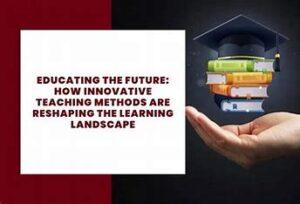Imagine slipping on a headset and finding yourself not just studying a business concept but living it. Virtual Reality (VR) and Augmented Reality (AR) offer exactly this kind of immersive learning experience. They take training beyond theory, letting employees practice skills in a lifelike setting without the usual risks or costs.
 VR and AR are game-changers for experiential learning. Employees can wander through a simulated business environment, make decisions, and see the outcomes of those choices unfold. This hands-on approach encourages deeper understanding and retention, transforming abstract concepts into tangible knowledge.
VR and AR are game-changers for experiential learning. Employees can wander through a simulated business environment, make decisions, and see the outcomes of those choices unfold. This hands-on approach encourages deeper understanding and retention, transforming abstract concepts into tangible knowledge.
click here to start your own online business for free Ced0224
Several forward-thinking companies are already reaping the benefits of VR and AR. Take the retail giant that’s using VR to train customer service teams worldwide, making role-play more engaging and insightful than ever. Or the tech firm offering AR-enhanced tools for engineering teams to collaborate in real time, tweaking designs as if they sat together in the same room.
Of course, adopting VR and AR isn’t just about plugging into a new gadget. It’s an investment, both financially and in terms of time. The initial setup might seem daunting, but the long-term gains—higher engagement, reduced training time, and improved performance—often outweigh the costs. Businesses need to weigh these benefits against their budgets and strategic goals to see if it fits their training model.
The future of business training could well be shaped by these immersive technologies. They offer the chance to craft personalized, engaging experiences that sit at the intersection of education and innovation. As the technology becomes more accessible, the opportunity to transform learning environments is too exciting to ignore.
Gamification Meets Professional Development: Motivating Through Engagement
Gamification isn’t just for video games; it’s a powerful tool reshaping how businesses approach professional development. This method turns mundane training tasks into engaging, interactive experiences. Imagine scoring points for completing sales modules or leveling up for tackling complex problem-solving exercises. This approach turns training into an adventure rather than a chore.

The real magic of gamification is how it motivates employees. By tapping into fundamental human drives like competition and achievement, gamified training makes learning feel exciting. Leaderboards, badges, and progress bars can encourage teams to push harder and put their skills to the test. It’s about crafting a journey, turning skills development into a quest that rewards effort and improvement.
Leadership skills, for instance, really benefit from narrative-driven role play. Employees aren’t just learning about crisis management or negotiation; they’re playing the hero in scenarios where their decisions shape outcomes. This sense of agency keeps them engaged, and more importantly, helps them apply these skills in real-life situations.
Many digital platforms offer gamified learning experiences, making them accessible to companies of all sizes. However, the key is to strike a balance. Over-reliance on competition can be counterproductive, so creating a system that fosters collaboration and provides personalized feedback is crucial. Real-time analytics can track progress and adapt challenges, ensuring that each user receives a customized learning path that suits their strengths and areas for growth.
Gamification isn’t just about making learning fun. It’s a strategic tool that, when done right, can unlock potential, drive engagement, and foster a culture of continuous improvement. By embracing this approach, businesses can better prepare their employees for the challenges of tomorrow.
Harnessing AI and Machine Learning: Personalized Learning Paths
The future of training is tailored with AI and machine learning stepping into the spotlight. Instead of one-size-fits-all programs, AI crafts learning paths that suit each learner’s needs. It’s like having a personal tutor who knows your strengths, weaknesses, and how you learn best.

AI-driven assessments are changing the game by pinpointing exactly where employees thrive and where they need a little boost. This data-driven approach means companies can offer resources that target specific skill gaps, saving time and increasing efficiency. With predictive analytics, businesses can even foresee future skills their teams will need as industry trends evolve.
Privacy concerns are real, especially when personal data is in play. Balancing innovation with ethics is crucial to maintain trust. Clear policies and transparent communication about data usage must be a part of the AI training package.
Swapping traditional learning modules for AI-enhanced systems doesn’t have to be radical. Many businesses take it step-by-step, integrating AI tools alongside existing resources. The key is to keep the focus on how these solutions can enhance learning without overwhelming teams with too much, too soon.
When implemented thoughtfully, AI and machine learning can revolutionize business training. They open doors to more efficient, effective learning that adapts as quickly as the world changes, keeping your workforce future-ready. It’s not just about being cutting edge; it’s about staying relevant and competitive in an ever-evolving landscape.
Flexibility and Inclusivity in Business Training: From Remote to Hybrid Workspaces
Business training has needed a new outlook, especially as remote and hybrid work models become the norm. It’s all about flexibility and accessibility now, making sure training resources reach everyone, no matter where they’re working from. Cloud technology and collaborative platforms have emerged as indispensable tools, breaking down barriers and facilitating seamless learning experiences.

Adapting training for hybrid settings isn’t just transferring old methods online. It’s about rethinking how training is delivered. Training materials need to engage a dispersed workforce, which often means bite-sized, on-demand content that fits around various schedules. Interactive webinars, digital workshops, and virtual breakout rooms have become standard practices that keep the learning experience dynamic and relevant.
Inclusivity is more than just a buzzword; it’s a basic requirement when designing training for hybrid setups. Ensuring accessibility for all employees, including those who might need specific accommodations, is vital. This includes being mindful of time zones, language barriers, and ensuring content is digestible for everyone.
Looking at success stories, several companies have aced this transition by being proactive rather than reactive. Firms that integrated flexibility and inclusivity from the ground up in their training programs not only maintained productivity but also boosted employee satisfaction and retention. It pays off not just morally but materially as well.
In this ever-adapting work environment, flexible and inclusive training isn’t optional. It’s necessary to keep up and thrive. By tailoring tools and tactics to fit diverse work models, companies can ensure their team members are well-equipped, happy, and productive, no matter where or how they work.
The Role of Soft Skills in a Digital Workplace: Training for Human-Centric Skills
In a world dominated by tech, it’s easy to forget the importance of human-centric skills. Yet, in digital workplaces, soft skills like empathy, adaptability, and clear communication are more critical than ever. They bridge the gap between technology and human interaction, ensuring teams work smoothly and productively.

The modern worker can’t just rely on technical know-how. Emotional intelligence, mindfulness, and teamwork are crucial for collaboration, especially as virtual meetings become commonplace. Developing these skills ensures employees not only keep up with digital demands but also contribute positively to a healthy work environment.
Training programs need to evolve beyond traditional lectures. Online and hybrid workshops focusing on real-world scenarios, peer feedback, and role-playing activities are effective. This interactive approach engages employees more deeply, promoting better retention and application of skills.
Successful companies view soft skills development as an ongoing journey, not a one-time event. Regular workshops and refresher sessions keep employees sharp and ready for challenges. The impact of these skills is evident in improved team dynamics, better leadership, and increased overall productivity.

As workplaces continue to transform, the emphasis on soft skills will only grow. Investing in training that hones these abilities can set companies apart. It’s not just about being tech-savvy but being people-centric, ensuring that the digital transformation works for everyone involved.
